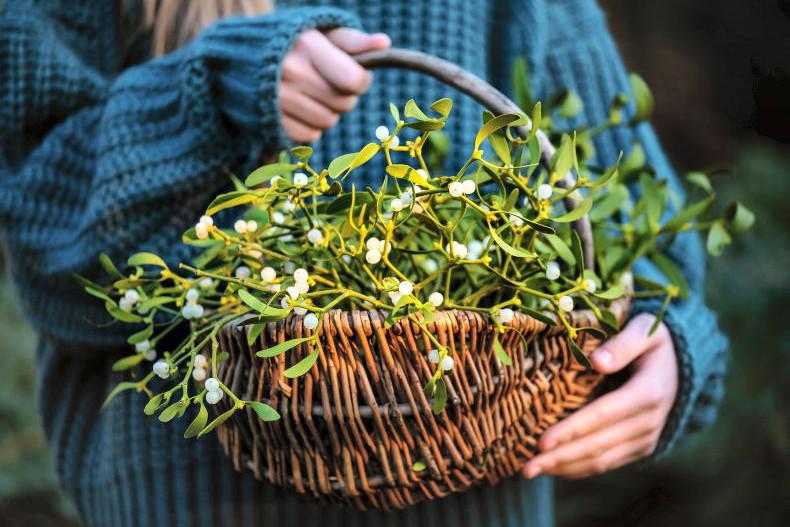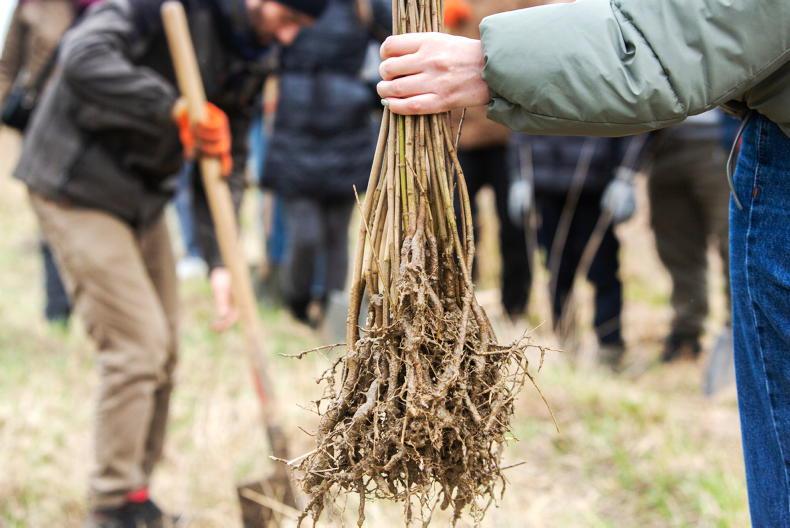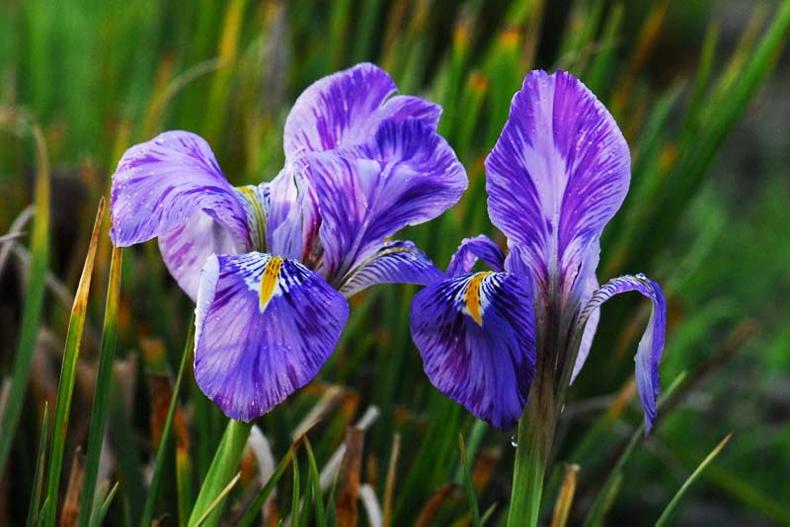Every wisteria plant I have seen this spring has been covered in swelling flower buds. The story of the enlarged show of wisteria flowers began last summer, when the bout of heat and drought produced climatic conditions that wisteria would be used to in its native parts of China and Japan – with warm, sunny summers akin to weather in Italy.
There are several kinds of wisteria, but only two appear in ordinary gardens. Even then, of the two main kinds of wisteria, one from China and one from Japan, the Chinese wisteria, Wisteria sinensis, is the one far more widely planted. It flowers on bare stems just before the leaves appear. It has small leaves, small flowers and is earlier flowering.

Wisteria.
The leaves resemble those of the laburnum (to which it is related) and have between seven and 13 leaflets. The stems twine up wires, tree branches or fences, and they wind anti-clockwise. The Chinese species flowers in April and May.
The Japanese species carries between 11 and 19 leaflets, its stems wind up clockwise around wires, and its flowers are much longer, up to one metre. It flowers later, into May usually, and by then the leaves will be more advanced and have a tendency to cover the flowers, so the stems need to be tied in to reveal the dangling flowers. There are some named varieties, notably white-flowered kinds, and some darker ones such as Black Dragon.
For best flowering of wisteria, it needs to be planted in a sunny position with reasonably good shelter from strong winds. The plant is very flexible when young and easily damaged and the flowers can be shredded by a strong gale. The sunshine is important for this plant from sunny climes. If planted in shade, it tends to flower very little, if at all.
Like any climber it needs support of trees, fences or sturdy wires on a wall. The main stems will eventually get as thick as a man’s arm and care should be taken not to allow the main stems to pass behind downpipes or gutters; it can be very pretty trained on a single stem as a standard, or on an arch or a tripod of wooden poles.
Being a member of the pea family, the wisteria is capable of fixing nitrogen by means of bacteria in nodules on its roots. The roots need good soil aeration and the ground ideally should be light, sandy and fertile, but well drained. It should not be pure sand or very hungry soil, but it must be well-drained. Too moist or too rich soil can cause very vigorous growth and perhaps many years of failure to flower.
It is very common for wisteria to be slow to flower and this is usually the result of unsuitable soil conditions – too rich and too moist. Or the spot at the base of a wall can be dry for a young plant. After planting, untie the plant from its cane, separate the stems and tie them to support wires. Train the stems where they are needed and remove the unwanted shoots.
In July shorten back all the whippy growths to finger length and again in winter cut back any more that have formed to finger length.
This pruning keeps the climber neat and encourages flowering. Do not feed wisteria, except perhaps with a shake of sulphate of potash to encourage flowers if the soil is heavy, or with a mulch of good manure or compost if the soil is very poor and dry. Then just enjoy the annual parade of lilac-blue, fragrant flowers.
A wet spot in a lawn is not unusual in a rural garden and it can be a nuisance to mow, but it offers an opportunity to grow one of the most beautiful spring flowers, the snakeshead fritillary. This lovely flower has drooping flowers on slender stems to about 30cm tall, rather like a lampshade, with a chequerboard pattern.

Fritillary.
This is a really lovely flower when viewed from below. The faded purple is beautiful but very subtle, and may not even be noticed from a distance, but the effect of a crowd of fritillaries dancing in the sunlight over short grass is truly memorable. This plant grows from small bulbs and can be planted in autumn. It is native to Europe where it typically appears in water meadows, so a damp spot or low-lying area that gets wet in winter and does not dry out too much in summer is its natural home.
Fruit, Vegetables and Herbs
Sweetcorn and runner beans can be sown in the greenhouse for planting out later, but do not delay. Spray apple trees for apple scab disease and check for greenflies. Vegetable seed sowing can continue. Sow French beans as the soil warms up.
Lawn
Lawns have been growing reasonably well as soil temperatures have moved up after the long cold spell. If the grass is yellow or pale and slow-growing, it would benefit from some lawn fertiliser or high-nitrogen fertiliser.
Trees, shrubs and roses
Only container-grown trees or shrubs should be planted now. It’s too late now for moving shrubs or young trees within the garden, except evergreens. Spring shrubs should be pruned as they go out of flower, but if there is plenty of space let them grow.
Flowers
Bedding plants should be motivated to grow by regular watering and feeding. Tubers of begonias and dahlias can be potted up, or planted out towards the end of the month, and corms of gladiolus can be planted out where they are to flower.
Greenhouse and house plants
Houseplants can be re-potted now, if they are pot-bound and inclined to topple over easily. Over-grown house plants can be cut back now and well watered and fed until they show signs of new growth. All greenhouse plants should be fed on strongly now and watered.
Every wisteria plant I have seen this spring has been covered in swelling flower buds. The story of the enlarged show of wisteria flowers began last summer, when the bout of heat and drought produced climatic conditions that wisteria would be used to in its native parts of China and Japan – with warm, sunny summers akin to weather in Italy.
There are several kinds of wisteria, but only two appear in ordinary gardens. Even then, of the two main kinds of wisteria, one from China and one from Japan, the Chinese wisteria, Wisteria sinensis, is the one far more widely planted. It flowers on bare stems just before the leaves appear. It has small leaves, small flowers and is earlier flowering.

Wisteria.
The leaves resemble those of the laburnum (to which it is related) and have between seven and 13 leaflets. The stems twine up wires, tree branches or fences, and they wind anti-clockwise. The Chinese species flowers in April and May.
The Japanese species carries between 11 and 19 leaflets, its stems wind up clockwise around wires, and its flowers are much longer, up to one metre. It flowers later, into May usually, and by then the leaves will be more advanced and have a tendency to cover the flowers, so the stems need to be tied in to reveal the dangling flowers. There are some named varieties, notably white-flowered kinds, and some darker ones such as Black Dragon.
For best flowering of wisteria, it needs to be planted in a sunny position with reasonably good shelter from strong winds. The plant is very flexible when young and easily damaged and the flowers can be shredded by a strong gale. The sunshine is important for this plant from sunny climes. If planted in shade, it tends to flower very little, if at all.
Like any climber it needs support of trees, fences or sturdy wires on a wall. The main stems will eventually get as thick as a man’s arm and care should be taken not to allow the main stems to pass behind downpipes or gutters; it can be very pretty trained on a single stem as a standard, or on an arch or a tripod of wooden poles.
Being a member of the pea family, the wisteria is capable of fixing nitrogen by means of bacteria in nodules on its roots. The roots need good soil aeration and the ground ideally should be light, sandy and fertile, but well drained. It should not be pure sand or very hungry soil, but it must be well-drained. Too moist or too rich soil can cause very vigorous growth and perhaps many years of failure to flower.
It is very common for wisteria to be slow to flower and this is usually the result of unsuitable soil conditions – too rich and too moist. Or the spot at the base of a wall can be dry for a young plant. After planting, untie the plant from its cane, separate the stems and tie them to support wires. Train the stems where they are needed and remove the unwanted shoots.
In July shorten back all the whippy growths to finger length and again in winter cut back any more that have formed to finger length.
This pruning keeps the climber neat and encourages flowering. Do not feed wisteria, except perhaps with a shake of sulphate of potash to encourage flowers if the soil is heavy, or with a mulch of good manure or compost if the soil is very poor and dry. Then just enjoy the annual parade of lilac-blue, fragrant flowers.
A wet spot in a lawn is not unusual in a rural garden and it can be a nuisance to mow, but it offers an opportunity to grow one of the most beautiful spring flowers, the snakeshead fritillary. This lovely flower has drooping flowers on slender stems to about 30cm tall, rather like a lampshade, with a chequerboard pattern.

Fritillary.
This is a really lovely flower when viewed from below. The faded purple is beautiful but very subtle, and may not even be noticed from a distance, but the effect of a crowd of fritillaries dancing in the sunlight over short grass is truly memorable. This plant grows from small bulbs and can be planted in autumn. It is native to Europe where it typically appears in water meadows, so a damp spot or low-lying area that gets wet in winter and does not dry out too much in summer is its natural home.
Fruit, Vegetables and Herbs
Sweetcorn and runner beans can be sown in the greenhouse for planting out later, but do not delay. Spray apple trees for apple scab disease and check for greenflies. Vegetable seed sowing can continue. Sow French beans as the soil warms up.
Lawn
Lawns have been growing reasonably well as soil temperatures have moved up after the long cold spell. If the grass is yellow or pale and slow-growing, it would benefit from some lawn fertiliser or high-nitrogen fertiliser.
Trees, shrubs and roses
Only container-grown trees or shrubs should be planted now. It’s too late now for moving shrubs or young trees within the garden, except evergreens. Spring shrubs should be pruned as they go out of flower, but if there is plenty of space let them grow.
Flowers
Bedding plants should be motivated to grow by regular watering and feeding. Tubers of begonias and dahlias can be potted up, or planted out towards the end of the month, and corms of gladiolus can be planted out where they are to flower.
Greenhouse and house plants
Houseplants can be re-potted now, if they are pot-bound and inclined to topple over easily. Over-grown house plants can be cut back now and well watered and fed until they show signs of new growth. All greenhouse plants should be fed on strongly now and watered.











SHARING OPTIONS